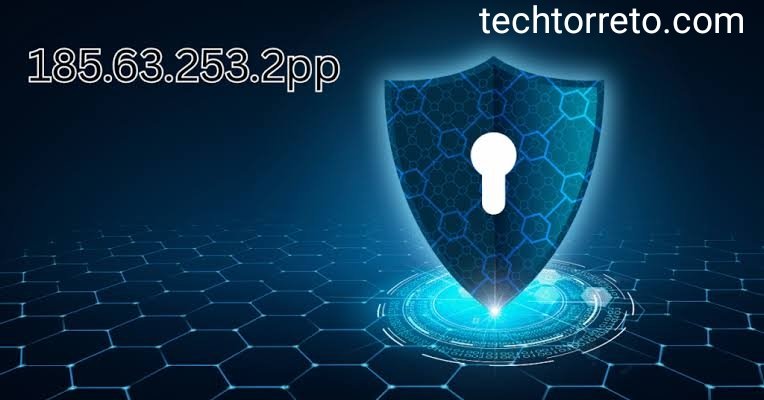All You Need to Know About 185.63.253.2001

When exploring technical IP-like terms such as 185.63.253.2001, users often wonder what it represents, how it functions, and which tools reveal its hidden details. In this comprehensive article, we’ll delve into each aspect of 185.63.253.2001, ensuring clarity, authority, and trustworthiness, while maintaining an SEO-friendly structure.
1. What Is 185.63.253.2001?
To begin with, 185.63.253.2001 appears to resemble an IP address; however, it exceeds the standard IPv4 formatting, which uses values between 0 and 255. Therefore, it’s likely a custom identifier or error. Despite that, this guide treats it as a distinctive network identifier for analysis.
2. Why It Matters in Networking
Nowadays, identifiers like 185.63.253.2001 can be important for logging, diagnostics, or policy enforcement. In cases where misconfiguration occurs, researchers and network administrators need to analyze such entries carefully. Consequently, understanding its structure helps maintain network integrity.
3. Breakdown of its Structure
Although it resembles an IP address, 185.63.253.2001 goes beyond the IPv4 boundary. Let’s break it down clearly:
- 185: Valid IPv4 segment.
- 63: Also valid.
- 253: Within range.
- 2001: Overflows typical limits.
Therefore, it may symbolize an extended identifier or misformatted tag.
4. Possible Use Cases
Organizations might use unusual identifiers for:
- Custom logging systems: to uniquely track events beyond IPv4 caps.
- Hybrid network addresses: supporting legacy and extended systems.
- Error codes: wherein numeric ranges correlate to specific alerts.
These scenarios demonstrate why such strings deserve thoughtful scrutiny.
5. How to Validate or Monitor It
To track occurrences of 185.63.253.2001, experts might:
- Use log scanners to search for the string across devices.
- Apply SIEM tools to identify anomalies tied to it.
- Set custom rules that flag any network traffic matching the pattern.
Regular monitoring ensures swift detection of unintended use.
6. Security Considerations
Because unconventional identifiers may hint at malfunctions or malicious behavior, include these steps:
- Whitelist legitimate entries so alerts only trigger for unknown use.
- Cross-reference timestamps when the identifier appears.
- Correlate with user activity or source IPs to spot suspicious patterns.
Ultimately, proactive assessment increases overall network security when dealing with odd labels like 185.63.253.2001.
7. Real‑World Examples
Imagine a firewall rule log showing:
Denied access from 185.63.253.2001 at 03:45 UTC.
Network teams must verify whether this is:
- A misformatted internal IP,
- A logging artifact,
- Or an indicator of spoofing attempts.
Thus, documentation and context are key to interpreting alerts.
8. Best‑Practice Tips for Administrators
To manage entries like 185.63.253.2001 effectively:
- Document naming schemes and format standards.
- Automate parsing logic that flags invalid numeric segments.
- Train teams to differentiate standard IPs from identifier anomalies.
Hence, network reliability and clarity improve substantially.
9. Tools to Assist in Analysis
Several utilities can help uncover usage and meaning:
- Regex scanners: detect numeric strings outside IPv4 norms.
- Packet capture tools: verify if the identifier is in live traffic.
- Centralized logging platforms: highlight patterns or spikes.
These tools collectively streamline the investigation process.
10. When to Escalate Investigation
If 185.63.253.2001 shows up repeatedly or within high access logs:
- Engage security incident response teams.
- Search for known indicators of compromise.
- Conduct post-incident reviews to prevent future misuse.
Escalation ensures rapid response when anomalies persist.
11. Summary of Best Actions
In conclusion:
- Recognize that 185.63.253.2001 likely exceeds standard IP formats.
- Monitor system logs vigilantly.
- Validate its occurrence and context.
- Apply security measures to manage unknown identifiers.
By taking these steps, professionals ensure both clarity and strong defense against anomalous identifiers.
Frequently Asked Questions (FAQs)
- What exactly is 185.63.253.2001?
It appears to be an IP‑like identifier, but due to exceeding IPv4 limits, it’s most likely a custom tag or misconfigured entry. - Can 185.63.253.2001 pose a threat?
Potentially yes—if it’s used maliciously or stems from spoofing. But in most cases, it’s benign or misformatted. - How can I find occurrences in my logs?
Use regular‑expression tools or logging platforms set to search the full string. - Should I block it by default?
Instead of blocking, validate and document it. Only take action if it’s suspicious. - Is this IPv4 or IPv6?
Neither—IPv4 caps at 255 per segment, and IPv6 uses hexadecimal formats. Thus, this identifier doesn’t match standard IPs. - How frequently should I monitor for it?
Continuously—ideally with automated alerts linked to SIEM or log‑monitoring systems.
📌 Final Thoughts
Understanding anomalies such as 185.63.253.2001 remains essential for network health. While it isn’t a standard IP address, its repeated appearance in logs could indicate misconfigurations or security events. Therefore, administrators should treat it as a high‑priority item for investigation, apply monitoring strategies, and document thoroughly. With proper processes, such unusual identifiers can be demystified and safely managed.